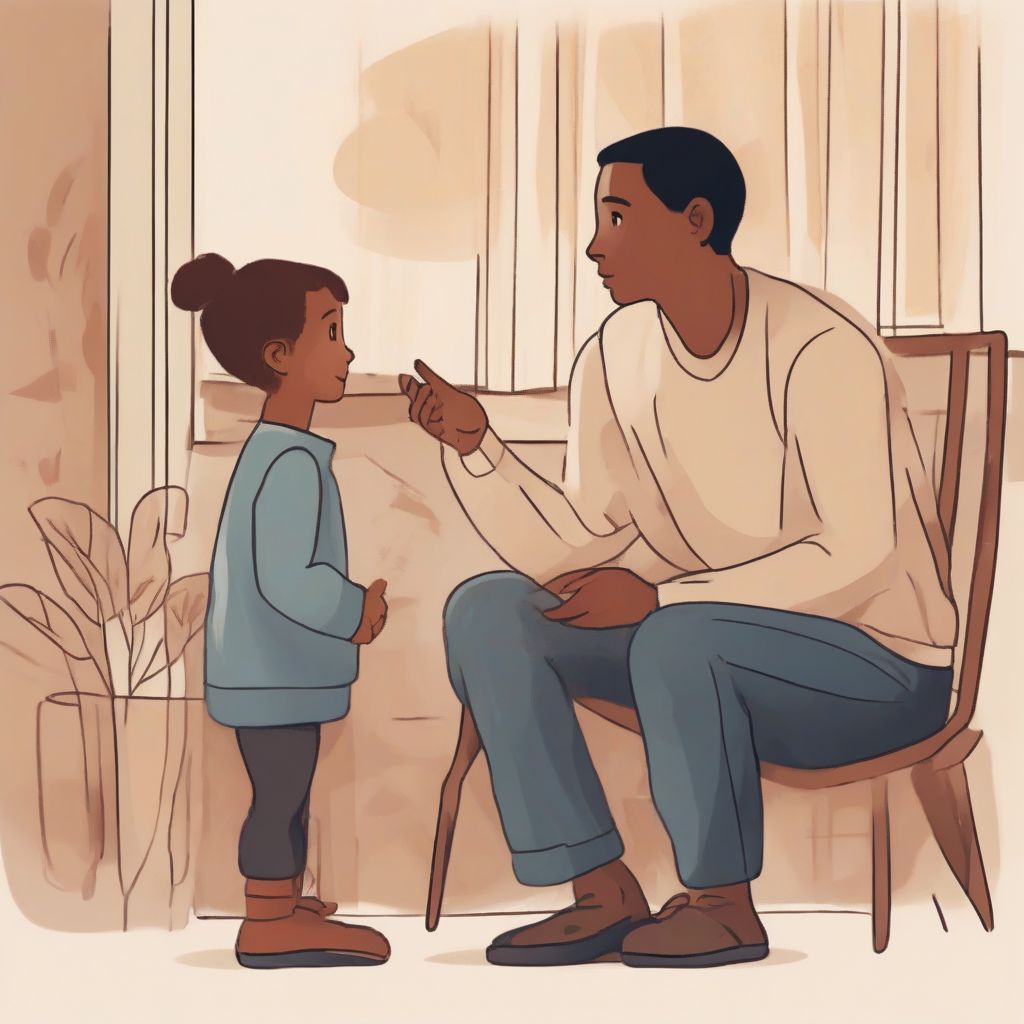Have you ever told your child to do something, only to be met with resistance, a meltdown, or complete silence? As parents, we often find ourselves frustrated, wondering why our children don’t seem to “hear” us. The problem might not be what we’re saying, but how we’re saying it. This is where mindful communication comes in. It’s about being more present, attentive, and compassionate in our interactions, fostering a deeper connection with our children.
What is Mindful Communication?
Mindful communication with children is a powerful approach that involves being fully present and engaged when we interact with our children. It means putting aside distractions, silencing our inner thoughts, and truly listening to what our children are saying – both verbally and nonverbally. Imagine your child as a little seed, and your words as the nourishment you provide. By communicating mindfully, you’re offering the most nurturing environment for that seed to blossom.
Why is Mindful Communication Important?
Children are incredibly perceptive. They can sense when we’re distracted, stressed, or not truly listening. Mindful communication offers a plethora of benefits:
- Strengthens Bonds: When children feel heard and understood, it strengthens the emotional bond you share.
- Improves Behavior: Mindful communication can reduce power struggles and tantrums.
- Boosts Self-Esteem: Feeling heard and validated contributes significantly to a child’s self-worth.
- Develops Emotional Intelligence: Children learn to understand and manage their emotions by observing how we respond to theirs.
- Enhances Problem-Solving: Mindful communication helps children articulate their needs and collaborate on solutions.
 Mindful Communication With Children
Mindful Communication With Children
7 Best Practices for Mindful Communication with Children
1. Be Fully Present
In our fast-paced world, distractions are plentiful. However, when interacting with your child, dedicate your full attention to them. Put away your phone, make eye contact, and let them know they have your undivided attention.
2. Listen with Intention
Listening goes beyond just hearing words. Pay attention to your child’s tone of voice, body language, and facial expressions. Validate their feelings even if you don’t fully understand them.
Expert Insight:
“The most basic of human needs is the need to be understood. The best way to understand people is to listen to them.” – Ralph Nichols
3. Use “I” Statements
“You” statements can sound accusatory and lead to defensiveness. Instead, use “I” statements to express your feelings and needs. For example, instead of “You’re making a mess!” try, “I feel overwhelmed when the toys are all over the floor.”
4. Practice Patience
Children, especially younger ones, might take time to articulate their thoughts and feelings. Be patient, avoid interrupting, and create a safe space for them to express themselves at their own pace.
5. Validate Emotions
Let your child know that all their feelings are valid, even the negative ones. Instead of dismissing their feelings (“Don’t be sad”), try validating them (“I understand you’re feeling sad right now”).
6. Ask Open-Ended Questions
Instead of asking yes/no questions, encourage dialogue with open-ended questions. Instead of “Did you have a good day at school?” ask, “What was the best part of your day at school?”
7. Teach by Example
Children are like sponges, absorbing everything around them. Model mindful communication in your daily life, not just with your children, but with your partner, family, and friends.
Common Questions About Mindful Communication with Children
Q: What if my child doesn’t want to talk?
A: Respect their silence. Sometimes children need space to process their emotions. Let them know you’re there for them when they’re ready to talk.
Q: How do I stay calm when my child is having a meltdown?
A: Take a deep breath and remind yourself that your child’s behavior is a form of communication. Try to see the situation from their perspective and respond with empathy.
Conclusion
Mastering the art of mindful communication with children is an ongoing journey. It takes practice, patience, and a genuine desire to connect with your child on a deeper level. By implementing these strategies, you can create a more harmonious and loving home environment where your child feels heard, understood, and cherished. Remember, even small steps toward mindful communication can have a profound impact on your relationship with your child.
If you’re looking for more resources on nurturing healthy family relationships and fostering emotional well-being, be sure to explore these articles:
- The Role of Empathy in Mindful Communication with Your Child
- The Impact of Mindful Parenting on Reducing Family Stress
- How to Use Gratitude Practices to Enhance Family Well-Being
- The Impact of Mindfulness on Improving Family Communication
- How to Teach Your Child Wellness Practices for Emotional Health
We’d love to hear from you! Share your thoughts, questions, and experiences with mindful communication in the comments below.
[amazon bestseller=”mindful communication with children”]
